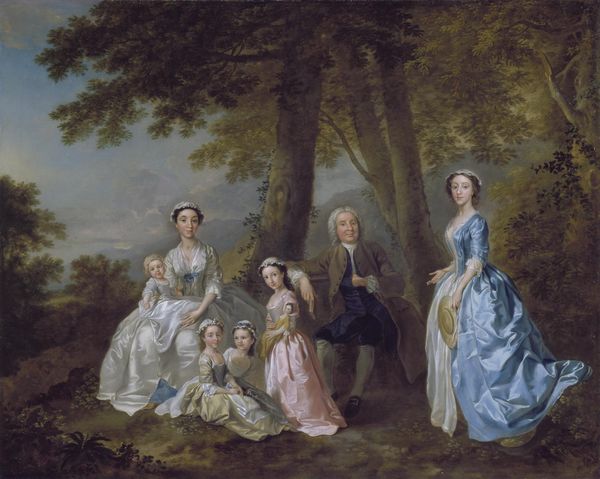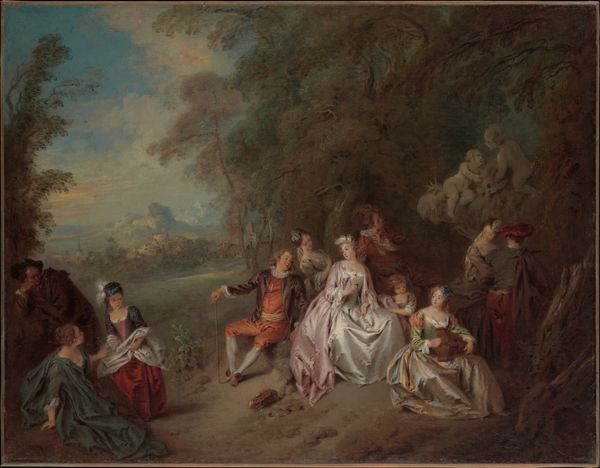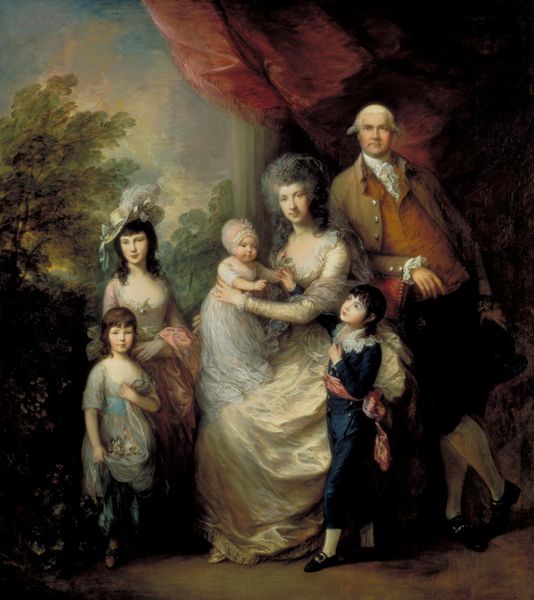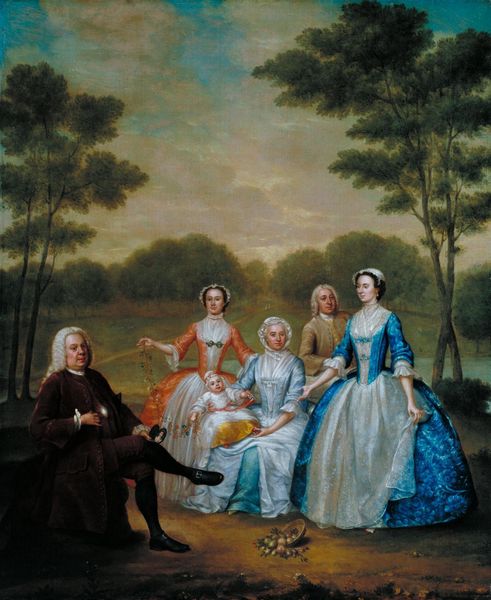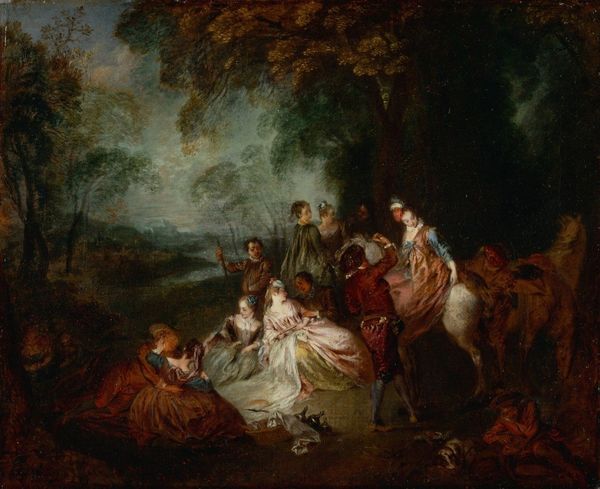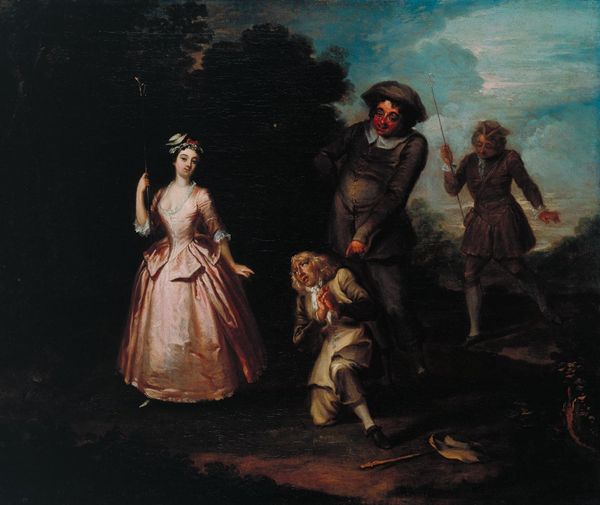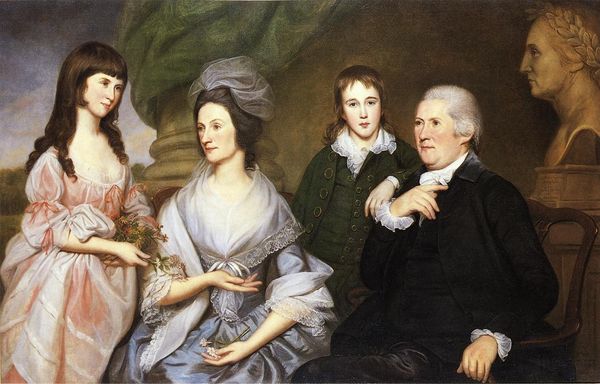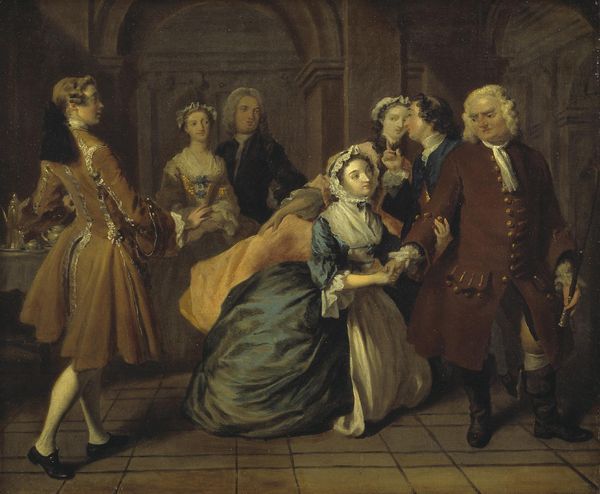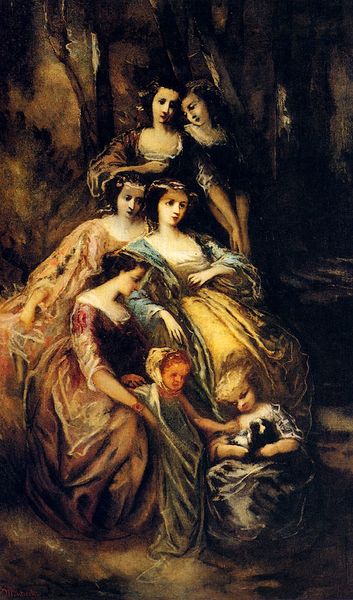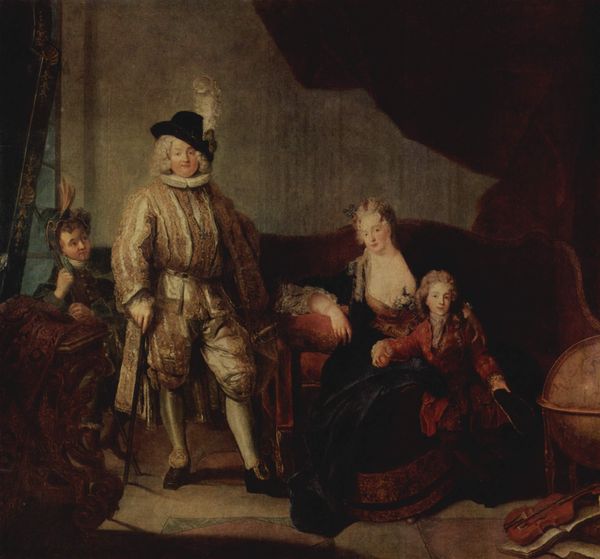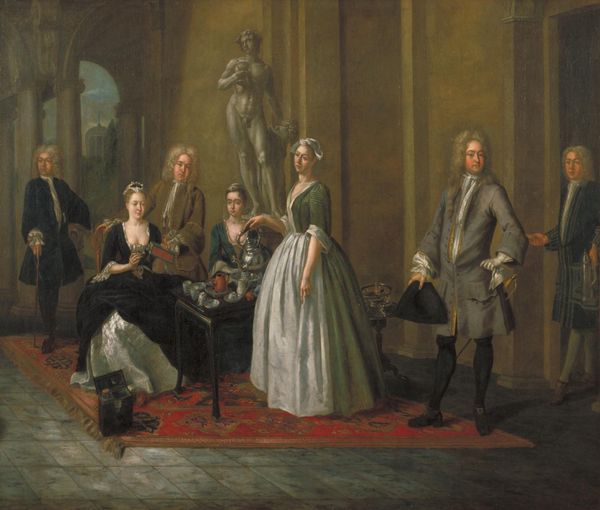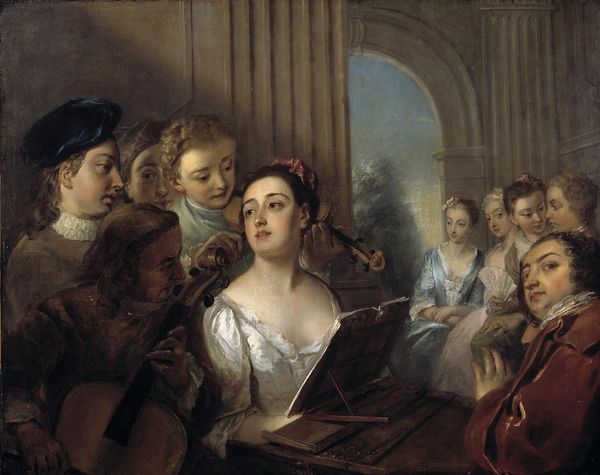
painting, oil-paint
#
portrait
#
painting
#
oil-paint
#
famous-people
#
genre-painting
#
rococo
Dimensions: 190.5 x 154 cm
Copyright: Public domain
Curator: Here we have "Portrait of Philip Tisdall with His Wife and Family," by Angelica Kauffmann. Editor: My first thought is the striking artificiality. The poses are so consciously arranged, and the figures so… perfectly lit, almost theatrical. Curator: Kauffmann was incredibly adept at capturing social dynamics within portraiture, and this piece is a great example of that. Consider how the arrangement places Philip Tisdall as the clear patriarch, centrally located, subtly elevated by the chair. The way that this painting functions to display his status and wealth to contemporaries is key. Editor: And look at the women! One plays the lyre, a traditional sign of the educated, accomplished woman, while another delicately places flowers on the bust – referencing the tradition of idealized beauty. Are those costumes attempting to make them resemble Greek goddesses? It’s fascinating to think how this image functioned within the rigid gendered performance of that era. Curator: Absolutely. What is equally interesting is Kauffmann’s ability as a female painter to navigate the male-dominated art world and secure commissions from elite patrons like Tisdall. What did it take for a woman to not only participate in this world but to dictate, on canvas, how its most prominent figures should be remembered? And from where did she acquire these materials? Her access shaped her practice as a whole. Editor: That raises a very valid question. I do find myself wondering how the family perceived this painting. Was it a cherished representation, or more of a constructed public image that affirmed certain socio-cultural ideals? Curator: It's probably some of both. The act of commissioning itself, the conscious choice of Kauffmann as the artist – these were deliberate decisions with public ramifications. But perhaps they also saw themselves reflected in it, to some degree. Editor: Indeed. By investigating the interplay between individual portraiture and larger societal aspirations, we come to grasp how artistic representations both reflected and influenced that era's elite social echelons. Thank you for shedding light on this aspect! Curator: It's vital to consider how an artist, working within available materials and under complex social demands, can construct enduring visual narratives that can shape historical identity. Thanks for your perspective.
Comments
No comments
Be the first to comment and join the conversation on the ultimate creative platform.

